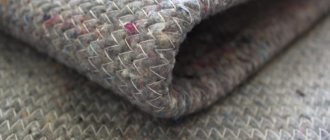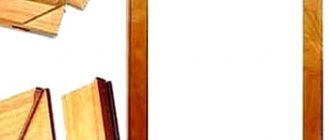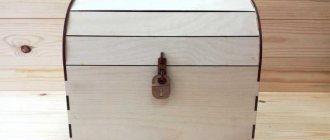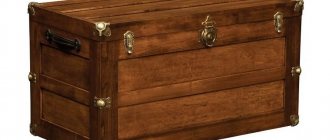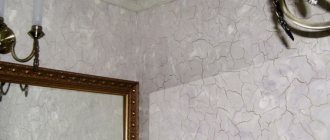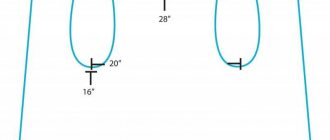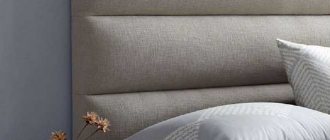The benefits of making it yourself
Have you decided to reupholster an old chair yourself and not buy a new one? Let us present a number of advantages, and you will understand why it is worth doing this work yourself.
- Significantly save your budget. A new chair of good quality is expensive.
- It may be that the chair does not fit the interior, and you will only be wasting your money.
- You can completely cope with the work on your own. But if in doubt, it is better to invite a specialist.
Upholstering chairs with your own hands is quite doable.
You yourself, according to your taste and color, will choose accessories and high-quality fabric.
All that remains is to find a design idea and bring it to life.
Use your imagination, since now there is a wide variety of materials - from expensive to cheap.
Even low-priced upholstery will allow your furniture to look absolutely respectable.
Currently, furniture manufacturers produce products that are not as strong and high-quality as before. Especially if it is inexpensive, it can quickly become unusable.
You will benefit from being able to save your old furniture.
DIY chair covers made of fabric
In order not to constantly return to changing the upholstery, it is worth making special covers for chairs. First you need to choose the right fabric for your chair covers. The material should fit into the interior, be easy to wash, and be of good quality.
Next, you should choose a sketch of the product. There are a lot of complex options, but there are also simple manufacturing instructions. Do-it-yourself chair covers made of fabric for beginners are made in accordance with the following algorithm:
- Take measurements from furniture. It is important to measure the length from the middle of the front legs to the middle of the back legs across the entire body. It is important to take into account all curves. Determine the width of the back and seat.
- Make a pattern. The result is one piece - a wide strip of fabric.
- Finish the edges of the cut.
- Place the workpiece on a chair. Sew the tape on both sides in the place where the bend is formed from the back to the seat. Tie a ribbon behind the back.
Simple chair cover
Such a case can become the basis for a children's version of the product - just make an applique of the muzzle or sew on beads and buttons. You can make the cape soft by making a lining, which in turn is stuffed with synthetic padding or foam rubber.
Why do you need a constriction?
First of all, this will save you money. New furniture of good quality is not cheap. And furniture from the last century, if you work with it well, will easily outlast inexpensive modern furniture. This is also an opportunity to choose the color and texture of the upholstery material that best suits your interior.
And again, any work with your own hands is a creative process that brings pleasure. This is an opportunity to create something unique, to put warmth and love into your home environment.
Another plus is that you don’t have to go shopping to find the right chairs that will match the rest of the furniture in your home. This is especially true for kitchen and dining sets, where chairs and a table come from one set.
Procedure for reupholstering a chair
The restoration of chairs can be divided into a sequence of actions. Each of the points requires explanation, but the general algorithm of actions can be summarized in a few dozen words:
- Remove the upholstery and soft part.
- Disassemble the frame into its components.
- Assess the condition of the frame, check the connections. Unstable connections should be disassembled, cleaned, and re-glued.
- If necessary, remove the old coating (paint or varnish) from the legs, back, frame and apply a new one.
- Update the seat base.
- Lay and secure elastic materials that provide softness.
- Cover with fabric.
Now you know in general terms how to reupholster a chair. But there is something to be said for each point - there are many different tricks that will make the job easier and the result more attractive.
How to cover a chair with dermantine
It is often necessary to change the upholstery on chairs. To do this, you must first disassemble the chair. Clean parts from old upholstery. If necessary, replace the soft filling. Next is how to cover a chair with dermantine:
- Attach the seat to the dermantine piece. Trace the shape with room for folding.
- Cut out the part. Pin the pattern to the bottom of the piece using a construction stapler.
- Repeat with the back too.
Covering the chair seat with dermantine
You can also restore the stool.
Over time, the appearance of upholstered furniture, in particular chairs, becomes unattractive. Often the problem concerns damage to the upholstery. You can replace the old coating without any problems and with special equipment. It is important to choose the right fabric for this. Protective covers can be created from this material by sewing.
Where to begin
First, you need to get rid of the old upholstery and filling once and for all. Only the springs, if any, should remain.
Secondly, carefully inspect the product to be remade. Its frame must be strong and stable, otherwise all the work will be done in vain. It is recommended that along with changing the upholstery fabric, you also change the entire chair.
To do this, you need to sand the surface to eliminate all scratches and unevenness, rinse the product thoroughly, tighten up loose parts, replace fittings, apply a primer (putty or white paint), paint and seal the result with varnish.
Thirdly, all the necessary tools and materials are prepared, which include:
- Fabric for reupholstery;
- Seat filler;
- PVA glue;
- Centimeter or long ruler;
- Cardboard pattern or plywood base for seating;
- Furniture stapler or small nails;
- Screwdriver, screws;
- Scissors or stationery knife;
- Pencil, soap or crayons (for measuring fabric).
An important point is the choice of suitable upholstery for upholstering the chair, which should be as dense and strong as possible. Also, upholstery fabric should be easy to clean from various types of dirt using a sponge or brush.
So, you can choose from tapestry, wool, chenille, artificial and natural leather, jacquard, satin. The required size is calculated by the formula: area of the upholstered area + 15-20 cm around the entire perimeter on the bends.
As for the filler, it should have a density of 30-50 kg/m3 and a thickness of at least 4 cm. Foam rubber, a soft, durable, non-creasing and non-deformable material, is considered optimal. Sheet polyurethane foam and latex are also used.
Batting and padding polyester are used extremely rarely, as they do not hold their shape and quickly sag. Under no circumstances should you stuff the seat with bulk materials (polyurethane balls, buckwheat husks, etc.).
Kinds
All types of furniture fabric on the market can be classified into several categories.
By composition
Depending on the composition, there are three groups of upholstery fabrics.
- Natural - such fabrics are 100% linen, wool and cotton; jute is less often used. The advantages of the material include the ability to pass air and environmental safety. However, under the influence of humidity, fabrics shrink noticeably, so it is not recommended to use them for dining and kitchen areas.
- Synthetic - this group includes nylon, nylon, polyester and acrylic. Such fabrics are characterized by high resistance to abrasion and other mechanical stress; they do not shrink after wet cleaning and washing. But at the same time they are often unpleasant to the touch and do not allow air to pass through well.
- Artificial fibers are chemically processed natural fibers. A typical representative of such materials is viscose and its analogues. It is hypoallergenic, easy to maintain and soft. When washed, it does not shrink and at the same time has a very affordable price.
According to the production method of the front layer
According to this characteristic, all types of fabrics are divided into woven and non-woven.
- Non-woven - usually imitate natural leather or suede; these include flock and upholstery with a structure similar to it. Technically, they are pile glued to a backing. The durability of such fabrics directly depends on the chosen lining and the quality of the adhesive composition.
- Woven - these materials are obtained by interlacing threads. This includes jacquard, chenille, tapestry and some other fabrics. The pile here is either woven into the substrate or absent altogether.
According to production technology
Depending on the manufacturing technology of fabrics, the following types are distinguished.
- Faux leather is a fabric with a soft, pleasant-to-touch texture. The fabric is dense, durable, and easy to care for; cleaning can be done with ordinary water and a sponge.
- Artificial suede is a cotton or polyester backing with thick, fine pile glued onto it. Tactilely pleasant fabric, available for sale in a wide variety of textures and shades. However, it requires delicate and careful care.
- Jacquard - this material is famous for its nobility; it is classified as premium class. The material is suitable for people who prefer unique designs. Its structure is a mixed fabric consisting of natural and synthetic threads. This ensures the wear resistance of the material and its dimensional stability.
- Tapestry is a woven, wear-resistant and very dense material. As a furniture coating, it does not deform and retains its impeccable appearance for a long time.
- Genuine leather is a durable eco-friendly material. It looks expensive and gives the room a respectable look. It should be borne in mind that the skin needs specialized care. The skin reacts poorly to elevated temperatures and does not tolerate direct ultraviolet rays.
- Chenille - translated from French, this word means “caterpillar”. The fabric received such an unusual name because of the type of weaving of the fibers. They are tightly twisted, and additional fibers are woven into them. The resulting material is textured and looks very expensive. Chenille is valued for its moisture resistance and abrasion resistance. The fabric has a soft elastic structure and resistant colors that do not fade in the sun.
- Jacquard is an accessible, relatively inexpensive material. Its main advantage is the dense weaving of the fibers and the presence of both synthetic and natural threads in the structure. This ensures a long service life, the fabric does not deform, does not fade under the influence of direct sunlight and does not lose the brightness of colors after many washing cycles. In addition, jacquard is easy to clean from any contaminants, and therefore belongs to the group of premium-class hygienic materials.
- Flock - this fabric is an ideal solution for homes where small children live. The material is quickly and easily cleaned from even the most difficult types of contamination.
- Velor is another type of pile fabric based on synthetic and natural fibers. The material is widely used in the manufacture of frameless chairs. The velor covering is soft. The canvas does not wrinkle even after long-term use; it is available in a wide selection of colors and prints. The only drawback is the rapid loss of lint. In addition, only the most gentle products can be used to clean this textile.
- Microfiber is a new generation textile. It is very popular due to its resistance to mechanical stress of medium and high intensity. Weaving is based on the interconnection of ultra-thin fibers of synthetic origin, usually used in combination with natural materials.
Less often, chairs are upholstered with some other fabrics, but the ones listed are used more often than others. They are distinguished by a variety of prints, textures and shades, and are also less susceptible to unwanted external influences.
Cotton and natural suede as upholstery materials will cost an order of magnitude more, and will also require the most complex maintenance. Without specific care, such materials will not last long.
How to decide on color
It is important to carefully approach the choice of shade and texture of the future product. Here photographs of chairs from furniture catalogs, where you can find hundreds of upholstery options, will help you in your search. You also shouldn’t lose sight of your own wishes, the interior of the room, and the design of other pieces of furniture.
The color of the upholstery of a restored chair is usually dark. The most commonly chosen colors are brown, blue and burgundy. However, for light frames, fabric of a golden or beige tone is selected. Often preference is given to more intense colors, especially if the furniture is intended for children's rooms or living rooms in the pop art or city style.
An interesting solution would be to use several materials on one product: for fabric mosaics in one place or for upholstering different areas of a chair.
Review of fabrics for upholstery of chairs and their choice
To update the appearance of furniture, you need to change its upholstery from time to time. In order for the new coating to serve for a long time, it is important to select the right material. Today, the market offers a wide variety of options for high-quality and practical updating of chairs and stools.
Preparatory work
First of all, you need to get rid of the old upholstery and filling. The tools you will need are an anti-staple gun or a flat-head screwdriver or pliers.
We unscrew the seat, if there is a backrest, then that too. We take out staples, nails, screws. We clean the surface of the chair from everything unnecessary, from glue residues, from old foam rubber.
If there is a need for minor repairs to the chair frame or springs, these need to be done. Cracks should be filled with glue or sealant and puttied.
If you wish, you can update the color of your chair. First, go over its surface with sandpaper. Next, the surface needs to be degreased, and after painting, varnished.
It is very important to be careful when dismantling so as not to damage individual parts of the chair. The old upholstery can be used as a pattern. Or take new measurements using a measuring tape.
You will also need a furniture stapler and staples, or a hammer and nails, tailor's scissors, a utility knife, a long ruler, a chalk or something similar.
Technology and stages of work
Transporting a chair yourself involves several steps: first you need to clean and evaluate the frame, then you can start working on a new project.
Removing old upholstery
An important step in restoring the chair is releasing the support frame. This is where a special tool comes in handy, with which you can easily remove old furniture staples. Staple removal tools can be found at woodworking and hardware stores.
Step by step guide:
- You must carefully place the edge of the regulator to the center of the holder, then carefully lift the device, pressing on the frame.
- When one end of the fastener is completely free, grab it with pliers and pull out the staple.
- After removing all the fasteners, you need to remove the fabric and soft padding to expose the base. You can then remove the material from the back.
The upholstery should not be removed with great effort; there is a high risk of deformation and damage to the frame due to intense impact. The old fabric must be removed in stages, systematically moving from the edges to the center.
Dismantling the frame
Use a rubber mallet to disassemble the wooden frame of a kitchen chair or stool. It needs to touch the areas where the parts are connected; in this case, the frame will quickly break up into separate components in the form of a seat, back and legs. The condition of the parts can be assessed by the presence of scratches, chips, mold, dents; if there are rotten areas, the parts need to be replaced.
Be sure to inspect all fastener areas to promptly remove unstable fasteners. All parts are thoroughly cleaned and glued back together.
Assembling the soft backing
The size of the soft padding for the seat should correspond to the width and length of the base of the chair; here it is necessary to leave 1.5-2 cm around the perimeter in the form of allowances for future seams. Subsequently, if excess matter is formed, all protruding ends will be easily cut off.
Guide to action:
- Pre-cut directly onto the fabric or cut out a template from paper. Depending on the shape of the chair, you can create a soft round or rectangular pillow.
- It is better to trim the workpiece with tailor's scissors; their sharp sharpening allows you to get a smoother edge.
- The soft support must be attached to the base with glue and allowed to dry completely for a quarter of an hour.
- The top of the product should be lined with a small layer of polyester insulation.
Restorers prefer to use dried herbs or horsehair as a substrate, since dust mites do not grow in them and the tampon retains its properties longer.
Back upholstery
This is the most important stage, since the practicality and decorative capabilities of the restored furniture depend on it. It is necessary to ensure that the narrowest stretches of the selected material, creases and creases are not allowed here. When securing the fabric to the frame, the hammer must be used carefully, maintaining strength so that it can be replaced with a hammer.
Upholstery assembly sequence:
- The fabric should be secured in the central zone in two places: back and front.
- Next, you need to provide tension and secure the material on the right and left.
- Maintaining an even distribution of the load, the fabric is attached to the sides. The same manipulations are repeated front and back.
DIY chair back
Using nails for wallpaper is more labor-intensive than working with a furniture stapler. The pins must be short, otherwise they will damage the soft support; they are used in tandem with a dense fabric lining.
Final restoration work
The restoration of the backrest is carried out in two stages: first it is covered with fabric, then it is covered with a paint coating composition. If cracks are identified, they are filled with putty or sealed. The upholstery is first pulled to the backrest, the fabric is fixed with a stapler, moving from the center to the perimeter. Foam rubber is glued to the front and the fabric is fixed with a margin along the edge.
Excess fabric is cut off and used as decorative tape to disguise nail heads or staples. The back can be varnished or varnished, in which case acrylic-based mixtures are recommended, which, unlike water-based compounds, last a long time and help maintain the integrity of the wood, preventing moisture and fungal infections.
Selection of materials
It is important to take into account the density of the fabric; it should hold its shape well. And easy to clean. The most commonly used are tapestry, flock, chenille, and jacquard. They are quite strong compared to other fabrics. The list of materials also includes leather and leatherette.
It is important to take correct measurements before purchasing. Don't forget to take into account the width of the hem and the height of the filler, this is approximately plus 15-20 cm to the original length of the fabric.
The color of the upholstery plays a big role. It should fit harmoniously into the interior. Dark colors are considered more practical, while light upholstery is more demanding to maintain. You can combine different materials in color and texture.
Additional processing options
To improve performance characteristics and protect furniture fabrics from various negative influences, they are subjected to additional processing - impregnated with special compounds.
- Water-repellent - such products significantly reduce the amount of moisture absorbed by the upholstery.
- Fire resistant - creates a coating that prevents ignition and the spread of fire.
- Dirt-repellent - after applying such products, oil, paint and other contaminants are absorbed into the finish to a lesser extent. Although you need to keep in mind that such impregnations do not help completely and not 100%.
- Anti-allergenic - impregnations that are absolutely safe for people, prevent the proliferation of dust mites and other pathogenic microflora.
Impregnations are applied during the fabric production process. They are sprayed onto the finished surface and left to dry for some time. These are safe formulations for people that do not cause an allergic reaction on the skin and do not emit unpleasant odors.
How to choose the right material
Before reupholstering a chair with your own hands, it is important to choose the right material to replace the old one. Upholstery should take into account:
- Suitable strength. After all, the soft elements of the chair - the seat and back - are subject to increased wear due to friction and mechanical load.
- Use only fabrics that hold their shape well. Otherwise, after a short period of time they will stretch and the furniture will begin to look unpresentable.
- Another necessary parameter is the ability to cleanse. The best choice in this case is canvases that can be washed, sanded, vacuumed or cleaned in some other way.
- Don't forget the basics. The material in this part of the furniture, when pulled, acts as a kind of softener. It creates a soft, somewhat springy substrate, which creates comfort when covering.
You'll love this quick method for restoring your favorite items.
For soft substrate
In order for the upholstery to be complete, the following materials are used for the soft substrate:
- Foam rubber has the advantage of being cheap. But after some time of use, it tends to flatten.
- Sintepon has the best characteristics. But the price is higher.
- Batting, copra, burlap and horsehair are good because they are quite environmentally friendly.
Before reupholstering furniture, you should consider the basic rule for the underlay. Its thickness should range from 3 to 5 cm. Only in this case will the covering be quite comfortable during use.
Another important detail is the choice of filler. Sintepon, latex, batting are suitable, but the best option is sheet foam rubber.
For upholstery
It is best to purchase fabrics and leather materials such as:
- Jacquard fabrics are characterized by a long service life due to their complex weaving structure and sufficient thickness.
- Leather – it is worth taking dense, but at the same time elastic, as too rough can crack. Since natural materials of animal origin are a rather expensive class, they can be replaced with dermantine.
- This type of chair repair is ideal for the kitchen, since this type of fabric material with imitation leather can be cleaned quite well with a damp cloth.
- Flock allows furniture to wear out slowly, but is quite expensive.
- Velvet is suitable for decorating an armchair or chair for the living room. Due to the fact that the fabric quickly begins to shine, it is better to cover it with furniture that is not used daily.
- The tapestry is quite wear-resistant and reliable. It is easy to clean and at the same time has an attractive appearance.
- Microvelor is well suited for living rooms.
- Chenille - due to its rough structure creates interesting light and shadow effects. And the special weave, which forms 3 layers, allows you to create a fairly durable surface during restoration.
Primary requirements
Of all the varieties of upholstered cabinet furniture, the maximum load falls on chairs, and this cannot but affect their integrity and external characteristics. In order to quickly and easily update furniture without extra costs, they resort to replacing the upholstery fabric. At the same time, the service life of the product and the preservation of its original characteristics directly depend on the quality of the material, that is, its resistance to wear, abrasion, density and strength:
- strength;
- resistance to mechanical damage;
- moisture-repellent characteristics;
- dimensional stability;
- crease resistance;
- combustion resistance;
- easy to clean.
In addition, furniture fabric should not form pills.
Separate requirements are imposed on the material, taking into account the specifics of its application. All types of fabrics for chairs and stools can be divided into two large groups. The first is relevant for the kitchen-dining room, the second can be used for furniture in offices, living rooms, bedrooms and in the hallway area. Chairs and stools in the kitchen usually have a simple design, so replacing the upholstery is not difficult. However, the use of furniture in this place is associated with intense mechanical stress, contact with moisture and dirt. That is why the base of the fabric must be as strong as possible so that the product can withstand abrasion.
It is important that the texture is stable, the fabric does not deform during use and does not wrinkle. Kitchen textiles should be fire-resistant and water-repellent; it is desirable that they are quickly and easily cleaned when necessary. The office and living room are often visited by household members, as well as their guests. That is why special attention is paid to the appearance of the fabric. The design should be attractive and fit harmoniously into the overall stylistic concept of the room. The material should not be peeled, since the pellets significantly impair the visual characteristics of the furniture.
It is advisable to give preference to wrinkle-resistant fabric; it should be quickly cleaned and not deteriorate from exposure to water.
Tips for choosing upholstery fabric
To reupholster chairs, you need high-quality upholstery fabric. Only furniture fabric is recommended, since decorative fabrics will not withstand constant loads and will wear out quickly. The material must be durable and retain its shape. Important requirements for the composition are ease of cleaning with a brush and soapy water and washing.
The most common types of dense fabrics for upholstering furniture are: flock, jacquard, chenille, tapestry, velor, boucle, etc. Interior items are also finished with leather, eco-leather, etc.
How to update an old chair with a backrest with your own hands? Before you update an old chair with a backrest with your own hands, you need to examine the condition of the furniture. Before restoration...
Flock is a popular material for finishing upholstered furniture. The fabric consists of cotton (35%) and polyester (65%). The material has a fine pile, is comfortable to use, durable, high quality, and wear-resistant. Caring for flock is simple; the fabric can be easily cleaned with a brush and soapy water, since a thin layer of adhesive is applied to the base of the fabric during production.
Jacquard is often used for upholstery of furniture, because the material is dense and has a textured surface. Fabric is produced in 2 ways: the fabric is woven from threads of different colors or created using single-color fibers of a neutral shade. Monochrome canvases are additionally decorated with prints from colored paper using a hot press. The advantages of jacquard are strength and wear resistance. However, caring for the canvas is difficult.
The advantages of velor are the smooth surface of the front part and the strength of the composition. The material has a small pile. The canvas is characterized by low creasing, so it is optimal for finishing pieces of furniture.
Chenille is similar in quality and texture to velor. Chenille fabric is made by weaving pile between two threads, which are connected in a spiral. The advantages of the canvas are high strength, affordable price, practicality.
Bouclé fabric is also used in furniture decoration. The fabric is practical, light, soft and elastic. The material drapes well, has water-repellent properties, and is resistant to deformation. Threads for creating fabric can be colored or plain. The material is easy to finish and allows you to correct defects and uneven seams.
Tapestry fabric is often used to upholster a chair. The material is heavy, consists of 3 layers, the weave of the threads is dense. To make a tapestry, synthetic fibers or natural yarn are used. Artificial threads are added to improve the performance characteristics of the material. Patterns and geometric patterns on the canvas are created by connecting threads and yarn of different shades. It is necessary to take into account that tapestry upholstery will not suit high-tech and modern styles.
Classification of upholstery materials and their composition
The modern textile industry offers many fabrics that are suitable for upholstery of upholstered furniture. Conventionally, they are divided into two groups:
- woven materials - obtained by longitudinal and transverse weaving of threads. To add fluffiness, pile fibers are introduced into them;
- non-woven fabrics - they are made using gluing, felting, pouring or other methods. The fluffy cover on them is formed by spraying or by applying an adhesive composition.
The first group includes jacquard, tapestry, chenille, velor, and the second group includes flock, arpatek, and alcantara.
Fibers of various origins are used to produce furniture fabrics. The main characteristics of the materials depend on their percentage.
- Natural: linen, cotton, jute, wool. Fabrics containing a lot of natural raw materials are the safest and most environmentally friendly. They do not emit harmful substances and do not cause allergies, have excellent hygroscopicity and breathability. The disadvantages are low strength, creasing and relative fragility.
- Artificial: viscose, acetate. The materials obtained through chemical transformations from wood cellulose are also safe and hypoallergenic. They do not wear out for a long time, allow air to pass through and are inexpensive.
- Synthetic: polyester, acrylic, nylon, nylon. They are based on polyamide or polyester fibers, which give the fabrics greater strength and resistance to damage, ultraviolet radiation and chemicals. But these fabrics can accumulate static electricity and provoke allergic reactions.
Complex or mixed fabrics allow you to combine the advantages of fibers of different origins. The optimal ratio for upholstery fabrics is 65% artificial and synthetic threads and 35% natural ones.
Most popular upholstery fabrics
Fabric for upholstery of chairs, which one is better is difficult to determine right away. There are a lot of options, each of which is distinguished by the originality of the external plan and the properties of wear resistance and moisture resistance.
Chenille
Chenille means "caterpillar" in French. The fabric received this name because of its unusual appearance - the fibers are tightly twisted, with additional fibers woven into them. The canvas turns out textured and looks very rich.
You can cover chairs with fabric of this quality in the kitchen and living room, since the composition contains synthetic and natural fibers in varying proportions. Additional advantages of the fabric are:
- Long-lasting color that does not wash out or fade in the sun.
- The texture is soft, elastic, pliable and easy to work with.
- Thanks to its composition and density, it retains its attractive appearance for a long time.
Chenille for upholstery
There is also a drawback - chenille strongly absorbs moisture and liquid, while it takes a long time to dry.
Jacquard
Jacquard is a relatively inexpensive material that has many advantages:
- The fiber weave is dense.
- The fabric contains synthetic and natural fibers.
- Textiles do not deform, do not fade in the sun, and do not wear out over a long period of time.
Note! Jacquard is a premium fabric. Especially if the composition includes a lot of natural raw materials.
Jacquard for furniture
Jacquard is easy to clean from dirt, so it is considered a fairly hygienic textile. Unfortunately, it is difficult to choose truly high-quality material.
Thermo-Jacquard
A “beginner” market absorber of fabrics for arranging the surfaces of diverse furniture. Material Features:
- Does not absorb moisture.
- Easy to clean from dirt;
- Can be used for a long time.
A unique pattern that is applied in several layers, creating unique visual effects.
Scotchgard
Special impregnation for various types of textiles. Thanks to this protective layer, the fabric does not absorb moisture and greasy substances. This type of layer is relevant on fabrics that will cover furniture in the kitchen or in the kitchen.
Flock
Flock is an ideal option for a home with children. The fabric is easy to clean even from difficult types of dirt. At the same time, the pattern is made simply, since the fibers do not crumble on the cuts.
Flock to update
A short soft pile is glued to the sweaty fabric, which gives the appearance of the flock an aesthetic appeal. You cannot clean flock with products that contain solvent, bleach, or chlorine—the fluff will come off.
You might be interested in this All about satin jacquard, fabric for bed linen
Velours
Velor chairs have several properties:
- The soft texture of the material does not crush after use.
- Huge variety of prints and colors.
- An inexpensive option for an aristocratic type of upholstery for furniture.
The disadvantage is the rapid loss of lint, which then remains on the clothes. Do not use many cleaning products as the textiles may fade.
Microfiber
Microfiber is considered a new generation textile. This type of furniture finishing is used due to its resistance to mechanical stress of varying degrees. In this case, weaving is carried out by combining ultra-thin threads of synthetic origin. Ideally combined with natural expensive materials.
Microfiber for furniture finishing
Alcantara
Chair upholstery made of Alcantara is becoming more and more common, since the material is an artificial analogue of suede. At the same time, the material is more effective:
- Keeps warm in winter, does not heat up in summer.
- Maintains an attractive appearance for a long time.
- Affordable price.
- Various colors.
If you go online, you can find a lot of designer furniture that is upholstered with Alcantara.
Arpatek
Arpatek is the highest quality leather substitute, which displaces many other textile analogues. There are many varieties of arpatek: python, varnish, crocodile and so on. You can choose the right option for any interior. Additional features:
- hypoallergenic;
- strength;
- low cost;
- does not get dirty.
Arpatek for furniture
If you upholster a chair with arpatek, it will immediately make the furniture more elegant. An ideal option for a high-tech interior.
Tapestry
Tapestry is an ideal upholstery material that is produced on the same principle as jacquard. But the weaving fiber contains a larger number of threads. The textiles are the most natural in composition, although acrylic threads are woven into the fabric to increase density. Sometimes you can find round weaving.
Gozhka
Matting is a good analogue of chenille. Covering with matting is most often done, since the material has a lot of positive properties:
- The weave is coarse and large compared to chenille.
- Usually 2 types of fibers of similar shade are intertwined in a checkerboard pattern.
- Does not absorb odor and does not fade in the sun.
- You can clean the surface with a vacuum cleaner or soapy water - dirt does not eat into the threads.
Chair matting
It recreates the effect of a natural surface, therefore it is often used for finishing furniture that will be part of an eco-style interior. It is not advisable to upholster chairs in a house where there are cats - pets love to sharpen their claws on such textured fabric.
Velveteen
The corduroy finish looks aristocratic and expensive. The fabric is soft to the touch with a variety of rib types. The color scheme is different, and various prints are often found. It retains its original appearance for a long time, but reupholstering such material involves a lot of inconvenience - small debris clings to the pile, it is difficult to clean from dirt, and dust quickly accumulates.
Artificial and natural leather
Leatherette and genuine leather are the most popular options for transforming furniture. There are many analogues of genuine leather that are of good quality and attractive appearance.
Leather for upholstery
artificial and genuine leather
Suitable type of upholstery fabric for the chair
The type of upholstery fabric depends on where the chair is located and for what purpose.
If chairs are in the kitchen or kitchen stools need to be upholstered, using natural upholstery materials is probably not practical, especially if there are children or pets in the house. All kitchen surfaces and objects are more sensitive to severe dirt, which cannot be withstood by either wet or dry cleaning.
Some products can permanently ruin upholstery, as well as the art of training family members, not to mention dog teeth and cat claws.
The following requirements apply to fabrics for upholstery of kitchen chairs and stools:
- Waterproof;
- Resistance to mechanical stress;
- Inability to fold cards
- Power;
- Fire safety;
- Ease of maintenance.
Synthetic materials have all of the above characteristics. May be:
- Leatherette, for example Arpatek, is the economical “king” of furniture upholstery;
- Leather;
- Faux leather.
Let's start re-upholstering
For convenience, you can make a stencil from thick cardboard and use a utility knife to cut out the foam rubber for the seat to the required size. Afterwards we glue the filling to the plane of the seat.
You can use PVA glue or other glue suitable for furniture work. Give the glue time to dry. Using the same template, we cut out the blank from the upholstery material. Don't forget to leave a hem allowance of 7-10 cm around the entire perimeter.
Now let's move on to the actual upholstery. Lay the material face down on a flat surface. Then a layer of padding polyester, if you decide to use it, and then the seat itself with foam down.
We carefully bend the material, do not stretch it too much, and nail it with staples or nails. Try to make a more or less even line. It is better to start fastening from the center and spread evenly to the sides.
Having finished on one side, go to the opposite, do the necessary stretch, smooth out wrinkles if they suddenly appear. The distance between staples is 1.5-2 cm. But if shaped waves form on the side surface, then in this case you can hammer in staples or nails more often.
Pay special attention to the corners to make sure they are as neat as possible. If necessary, tap the staples with a hammer. The back is tightened in the same way.
You can use thinner foam for it than for the seat.
Then we attach the resulting parts to the chair frame. Your updated chair is ready. As you have seen, reupholstering a chair at home is quite feasible.
Nuances of backrest restoration
To change the back upholstery, it should be dismantled, putty or seal the existing cracks, and chips should be cleaned. After this, you need to install the backing, cover it with fabric, apply paint and varnish. The process then consists of the following steps:
- Cut the rough fabric according to the pattern with a margin of up to 3 cm to make pulling more convenient. Pet her.
- Pull the upholstery over the backrest on one side.
- Secure the fabric with a stapler, moving from the center to the ends.
- Glue the soft backing to the front.
- Fasten the fabric tightly to the edges.
- Repeat the same with the finishing cloth.
Types of chairs for schoolchildren, the best brands, selection criteria
The excess should be carefully trimmed and the edges should be coated with glue. Staples or nails will not be visible if the chair is decorated with braid, which should be secured to the edges. It is convenient to do this by attaching them with pins, which can be removed about two hours after gluing. Then the product remains to be painted (acrylic paint is optimal, since the water-based composition will quickly wear off) and varnished. A chair with a back should look neat both in front and behind, and on the sides. You need to remember about the underside; it should also be stretched with fabric.
Features of re-tensioning the base with belts or a snake spring
To restore old chairs on canvas, you will need synthetic rubberized belts of approximately the same width. They are fixed in the center of the bar towards the frame. The new strip is secured with staples, rotated and fixed again. Then it is secured and tensioned on the opposite side. A soft substrate is placed on top. The tools you will need are a steelyard and a furniture stapler with staples.
You need to pull with a force of 1 kg on the seat, 8 kg on the back. When one side of the belt is already secured, a steelyard is hooked to the other end and pulled until the desired number appears. The desired length is marked with a marker.
To replace the snake spring, it must be fixed to the frame using special fasteners, and they, in turn, must be mounted using brackets on long legs. When positioned correctly, this part has a slightly curved shape. If you want the upholstery to last longer, place a fabric layer between the twisted wire and the pillow. This is done so that the foam rubber does not fray over time.
If the reupholstery of the chair is successful, you can try restoring other, larger upholstered furniture: an armchair, a sofa, a kitchen corner. The work is carried out according to the same principle, only the dimensions and shape of the product change. Restoring old broken things will help you save on buying new ones, and will also become a fun hobby for people who love to make things.
Constriction algorithm
When the frame is prepared and the color is chosen, the actual reupholstery begins. In general, the procedure is as follows:
- Remove old upholstery.
- Make the necessary repairs to the frame.
- Cut out pieces using a plywood seat base or old upholstery.
- If there are springs on the chair, then they must be tied vertically, horizontally and diagonally with a strong rope, making 8 knots on each spring.
- Place a piece of burlap over the springs to reduce the mechanical impact of metal objects.
- Cut out the filling and fabric using scissors or a utility knife. Pay close attention to the existing print: the pattern, stripes or ornament must match.
- Install and glue the filler. Fold the edges over the frame and secure with staples. Remove excess.
- Place the fabric on the workpiece, stretch it and secure it with a stapler. Work begins from the central part and continues along the entire perimeter. The step between staples should be 1-2 cm.
- Additionally, secure the upholstery with small nails. You can hide staples or nail heads with decorative elements.
- Cut off excess pieces of fabric.
- Cover the product with a protective coating: spray with a special spray and leave in a ventilated area for several hours.
- Install the seat into place using a screwdriver and screws.
- Glue a thin black fabric underneath the seat to give the chair a finished look.
- If necessary, repeat the steps to reupholster the upholstery of the back and armrests of the chair.
What determines the cost of reupholstery?
The cost of reupholstery services depends on various factors, but the main one is the cost of materials. Upholstering a pouf, chair, or sofa with furniture fabric is relatively inexpensive. But working with leather, tapestry, velor, jacquard requires large expenses.
Additionally, the price depends on the need to replace the packing and its material. Horsehair or seaweed, as well as working with them, are more expensive than foam rubber and cotton wool. However, price does not matter if it is necessary to reupholster an armchair or chair that belonged to a famous public figure, writer, or has historical value.
Selecting tools and consumables
The next step was a technical point, namely, choosing the appropriate tool. If I had simple things like a hammer and screwdriver, then the most important thing was that I had to buy a furniture stapler for fabric upholstery. I went to Leroy Merlin to get it, fortunately there is a lot of this stuff there, and the prices are affordable.
Inexpensive, but I need another option
I decided to abandon the cheap mechanical stapler in favor of a more expensive electric one - it is both more reliable and faster. And it may be useful in the future on the farm.
Mine is the one on the right
As a result, I took an electric stapler for 1,556 rubles and bought a pack of staples. Now I'm fully armed, and I can start upholstering my chairs.
